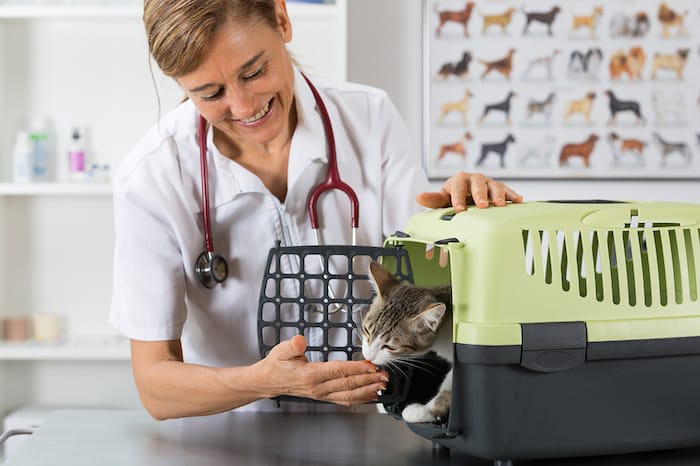Insurance for your pet is meant to help ease the financial burden of paying for veterinarian care. In return for the payment of a regular premium, you will get a reimbursement for a percentage of the money spent on medical procedures and treatments that are covered by your policy. There is insurance that solely covers accidents, while others cover both accidents and illness. Wellness plans for routine care are also something that you may purchase.
We love animals and are well aware of the high costs associated with veterinary care. Because of this, we strongly advise pet owners to purchase the best pet insurance for their pets. Understandably, some pet owners find it difficult to cover the costs of unexpected veterinary care if their animal suffers an injury or illness. For the times when you need to be present for your pet, having pet insurance is essential.
Why pet insurance is a good idea
You can choose from various pet insurance policies offered by different companies. There are various options accessible to you, and each pet is unique in its needs, so it’s necessary to do some research. Here are a few advantages:
- This policy covers vet fees if your pet is ill or injured.
- Farewell insurance lost and found and pet travel insurance
- Many insurance companies may discount you if you have more than one pet.
- Damage to someone or something else’s property is covered by Third Party Liability (dogs only).
Reinstatement or Lifetime Insurance: Which is better?
Reinstatement policies are called “Lifetime policies,” This sort of insurance provides continuous protection against illness and injury.
As long as your insurance coverage is active, you and your pet are protected against certain illnesses and injuries up to a certain annual maximum. Your pet will not be covered for additional treatment if the coverage year’s overall maximum is reached. Each time you renew your insurance, you’re re-insured to the full extent of your original policy.
A policy of maximum benefit
A maximum benefit policy provides a specified sum of money for each illness or injury. As long as the insurance policy is in effect, your pet is protected for every disease and injury until the maximum amount is spent, so long as you renew your coverage each year.
Treatment for disease or injury is no longer covered if the money has been spent in full. There is no time limit on attaining this amount.
Temporary
Each disease or injury will be covered for a predetermined time, with no exceptions. Your pet’s treatment for a specific disease or injury is normally covered for a year from the onset of that illness or injury. No of how long a policy lasts, the maximum period that the insurance covers an illness or injury is not included in the time limit. Since the claim duration is 12 months, if your policy renewal comes in the middle of a claim period, you must renew the policy to ensure that your claim will continue to be paid.
Your pet no longer is covered for a specific disease or injury once the defined term has expired or the fixed sum of money for that illness or injury has been exhausted.
Only an accident
Accident-only policies offer a set amount for each unintentional injury to assist with the cost of your pet’s medical care.
You may also include amounts for emergency medical care in accident-only policies. Depending on the policy, a 12-month time limit may apply. As a general rule, if your pet’s treatment will continue beyond the expiration of your insurance, you must renew your policy after the policy period to ensure that your pet is covered for any future mishaps that may require treatment.
What Is the Average Cost of Pet Insurance?
The insurance cost can vary widely depending on various circumstances, including the type of pet being insured. Pet insurance costs are affected by various factors, including age, breed, region, and whether or not the pet has been neutered. The greater the risk rating, the more likely you are to file a claim, and thus the higher the insurance premiums will be as a result. Lifetime (reinstatement) coverage is the most expensive, but it also gives the most protection.
Additional information about pet insurance
We have collected a list of terminology and meanings that you should be familiar with to help you better comprehend insurance jargon, which can be difficult to understand.
Exactly what does it mean to have a prior condition?
When you apply for a new insurance policy for your pet, you will be required to disclose any pre-existing conditions that your pet may have had. A pre-existing condition refers to an injury or disease that has already manifested on your pet before the beginning of the period covered by your insurance policy. If you want any changes in insurance companies, you must tell the new company about any pre-existing conditions covered by the plan you are currently carrying. If your pet has recently become unwell or has been injured, you should reconsider switching insurers because the new one might not cover the medical expenses associated with these issues.
What exactly is meant by the term “Bilateral Clause”?
Because of this, most insurance policies will consider it the same illness or injury if you’re pet suffers from the same ailment or sustains the same kind of injury on many occasions.
What exactly is “co-insurance,” commonly referred to as “percentage insurance,” and how does it function in the context of pet insurance?
The insured person and the insurance company agree on how the expense of treatment would be divided. If a claim is made, the pet owner will normally be responsible for paying a portion of the remaining veterinarian fees after the excess has been subtracted. Once your flat excess has been deducted from the total cost of the claim, it is customary for you to be responsible for paying a percentage of the remaining balance. This condition is typical in animals of advanced age.
Related Reading



